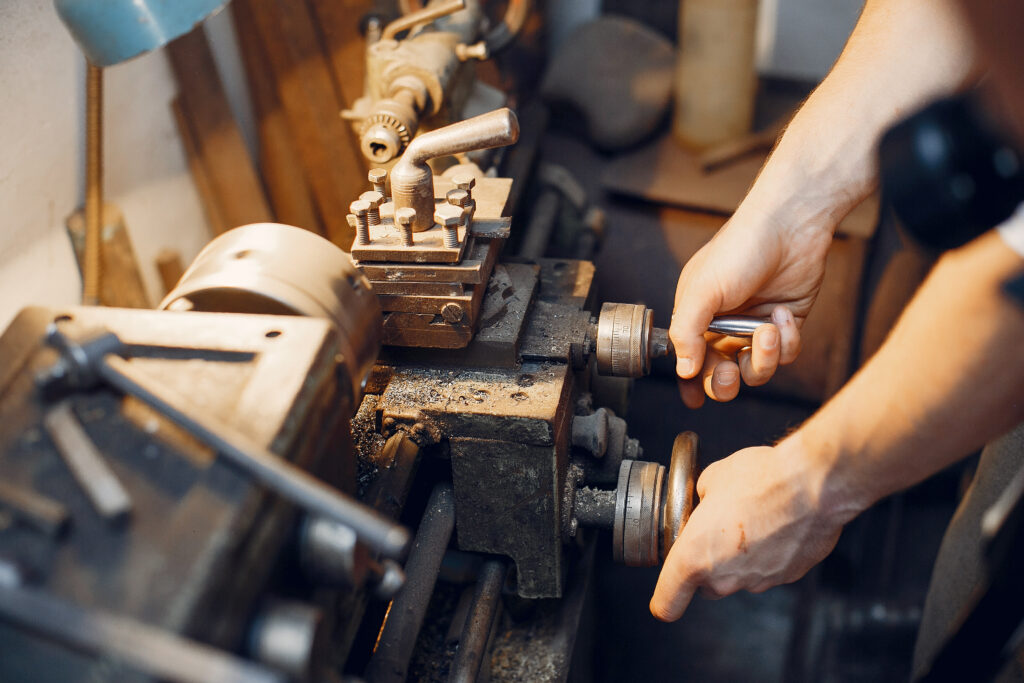In the world of machining, both lathes and milling machines are essential tools utilized for shaping materials into precise components. While these machines share the common goal of cutting and shaping, they operate differently, catering to distinct manufacturing needs. Understanding the difference between a lathe and a milling machine is crucial for precision engineering and fabrication processes. In this article, let’s explore what is a lathe and milling machine, their key functions, and how to choose between them. Let’s begin.
What is a Lathe?
A lathe is a fundamental machining tool that rotates the workpiece against cutting tools. It operates by holding and spinning the material while a cutting tool shapes it. Lathes are primarily used for cylindrical shapes and turning operations, creating symmetrical objects such as spindles, shafts, and discs. They come in various types, including engine lathes, CNC lathes, and precision lathes.
Key Functions and Operations of a Lathe:
- Turning: Rotate the workpiece to remove material and create cylindrical shapes.
- Facing: Cut a flat surface perpendicular to the axis of rotation.
- Drilling: Create holes in the material.
- Tapering: Create tapered shapes on the workpiece.
What is a Milling Machine?
Contrarily, a milling machine utilizes rotary cutters to remove material from a workpiece, performing a broader range of cutting actions. It moves in multiple directions – vertically, horizontally, and even diagonally – to shape materials. Milling machines are highly versatile and capable of creating complex shapes, slots, gears, and intricate designs. The main types of milling machines include vertical mills, horizontal mills, and CNC mills.
Key Functions and Operations of a Milling Machine
- Face Milling: Create a flat surface perpendicular to the cutter’s axis.
- End Milling: Cut on the ends of the workpiece to shape it.
- Slotting: Form slots or grooves in the material.
- Contouring: Carve intricate shapes or designs.
Differences Between Lathe and Milling Machine
Aspect | Lathe | Milling Machine |
Principle of Operation | Rotates workpiece while cutting tools remain stationary. | Rotates cutting tools while workpiece remains stationary. |
Functionality | Primarily used for cylindrical shaping and turning operations. | Capable of performing a wider range of cutting actions, including intricate shaping, slotting, and contouring. |
Cutting Orientation | Cutting tools move parallel to the workpiece’s axis. | Cutting tools can move in multiple directions – vertically, horizontally, and diagonally. |
Types of Cuts | Turning, facing, drilling, and tapering. | Face milling, end milling, slotting, and contouring. |
Incorporation of CNC Technology
Both lathes and milling machines can be equipped with CNC technology, enhancing their capabilities and precision. CNC lathes and mills use computerized controls to automate and precisely direct cutting tools, ensuring high accuracy and efficiency in manufacturing processes.
How to Choose the Right Machine
Selecting the right machine for your project depends on understanding the difference between cnc milling and cnc lathe machine, and how it matches your needs:
- Desired shape and size: Lathes are perfect for circles, milling machines are for everything else.
- Accuracy and finish: Precision is milling’s middle name, lathes excel in bulk work.
- Material: Both handle various materials, but consider specific requirements.
- Production volume and budget: High volume might favor lathes, complex jobs may lean towards milling.
Conclusion
In essence, while both lathes and milling machines contribute to machining processes, their distinct functions and operations make them suitable for different manufacturing requirements. Lathes excel in creating cylindrical shapes and turning operations, while milling machines offer versatility for complex shaping and intricate designs. Understanding the differences between milling machine and lathe machine is essential for precision engineering and fabricating parts across various industries. Ray Mechatronics offers a comprehensive range of top-notch machines, both lathe and milling from leading brands, ensuring access to the best tools for your machining needs. Contact us to get a quote.





